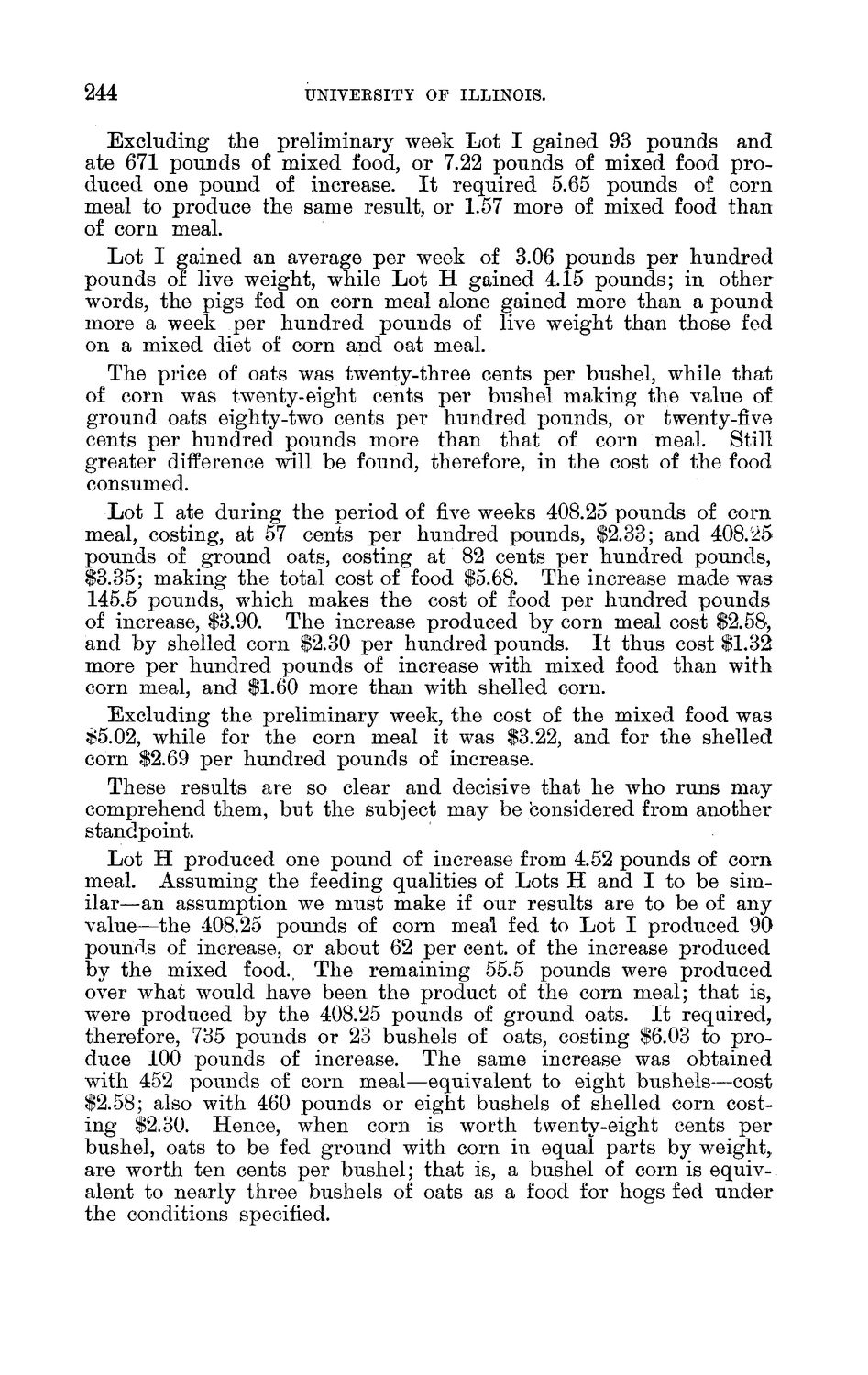| |
| |
Caption: Board of Trustees Minutes - 1888
This is a reduced-resolution page image for fast online browsing.

EXTRACTED TEXT FROM PAGE:
244 UNIVERSITY OF ILLINOIS. Excluding the preliminary week Lot I gained 93 pounds and ate 671 pounds of mixed food, or 7.22 pounds of mixed food produced one pound of increase. I t required 5.65 pounds of corn meal to produce the same result, or 1.57 more of mixed food than of corn meal. Lot I gained an average per week of 3.06 pounds per hundred pounds of live weight, while Lot H gained 4.15 pounds; in other words, the pigs fed on corn meal alone gained more than a pound more a week per hundred pounds of live weight than those fed on a mixed diet of corn and oat meal. The price of oats was twenty-three cents per bushel, while that of corn was twenty-eight cents per bushel making the value of ground oats eighty-two cents per hundred pounds, or twenty-five cents per hundred pounds more than that of corn meal. Still greater difference will be found, therefore, in the cost of the food consumed. Lot I ate during the period of five weeks 408.25 pounds of corn meal, costing, at 57 cents per hundred pounds, $2.33; and 408.25 pounds of ground oats, costing at 82 cents per hundred pounds, $3.35; making the total cost of food $5.68. The increase made was 145.5 pounds, which makes the cost of food per hundred pounds of increase, $3.90. The increase produced by corn meal cost $2.58, and by shelled corn $2.30 per hundred pounds. I t thus cost $1.32 more per hundred pounds of increase with mixed food than with corn meal, and $1.60 more than with shelled corn. Excluding the preliminary week, the cost of the mixed food was $5.02, while for the corn meal it was $3.22, and for the shelled corn $2.69 per hundred pounds of increase. These results are so clear and decisive that he who runs may comprehend them, but the subject may be considered from another standpoint. Lot H produced one pound of increase from 4.52 pounds of corn meal. Assuming the feeding qualities of Lots H and I to be similar—an assumption we must make if our results are to be of any value—the 408.25 pounds of corn meal fed to Lot I produced 90 pounds of increase, or about 62 per cent, of the increase produced by the mixed food., The remaining 55.5 pounds were produced over what would have been the product of the corn meal; that is, were produced by the 408.25 pounds of ground oats. I t required, therefore, 735 pounds or 23 bushels of oats, costing $6.03 to produce 100 pounds of increase. The same increase was obtained with 452 pounds of corn meal—equivalent to eight bushels—cost $2.58; also with 460 pounds or eight bushels of shelled corn costing $2.30. Hence, when corn is worth twenty-eight cents per bushel, oats to be fed ground with corn in equal parts by weight, are worth ten cents per bushel; that is, a bushel of corn is equivalent to nearly three bushels of oats as a food for hogs fed under the conditions specified.
| |